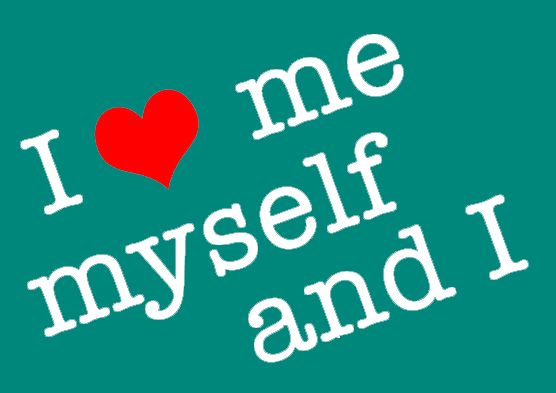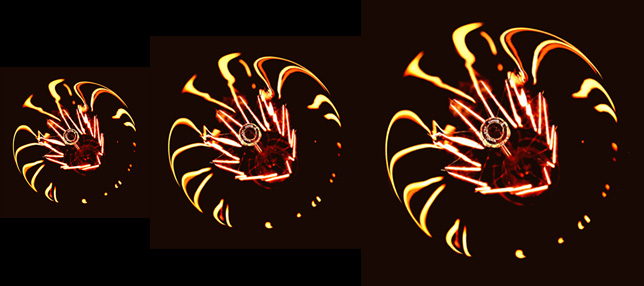Contrast is key to powerful persuasion
Contrast is key if you want to persuade anyone to your point of view or proposed course of action. Blending into the background is not an option. Contrast blocks out the other demands competing for your listeners’ attention and helps you ensure your message stands out.
Here are five opportunities for contrast when giving a persuasive speech or presentation:

1. Contrast in the opening of your speech
Your opening needs to stand out and grab your audience’s attention so that they are focused on you and what you have to share with them, not thinking about the day they’ve had, what to cook for dinner or anything else that pops into their mind. A polite, but innocuous platitude, such as “Hello, thank you for inviting me …” wastes those precious opening seconds when you need to make an impact and connect with your audience (the first step in persuasion).
A pause. A smile. Both are hard to pull off when you’re nervous, but dramatic in their impact. Everyone warms to a genuine smile. And a pause draws attention from whatever people are thinking about to focus on you and wonder what you will be sharing with them.
To keep their attention, open with a startling statistic, a personal anecdote (we all love a story), or a relevant quote from someone significant to your audience eg an industry expert or a famous person/historic figure.
2. Contrast in content
In most business communication, the goal is to persuade your audience to adopt your call to action. This might be to buy your sales pitch, affirm your recommendations, recommend you to others, etc. Effective persuasion requires contrast in content.
Evidence-based information, eg statistics, track record or citation of a reinforcing quote from a relevant expert drive credibility, authority and recognition of your expertise. However, these alone are not enough to persuade. You need to contrast this ‘rational’ and ‘functional’ information with more emotive content that helps to build trust and relationships; connections with your listeners. Here, storytelling and anecdotes come into their own. They may reveal something about you as a person, what you are like to work with, your motivations and so on. They are your chance to demonstrate your passion and enthusiasm for the case in hand.
Juxtaposed, the contrast of functional and emotive content can bring even greater potency to your message.
3. Contrast of language and words
Rich and colourful vocabulary stands out. It works well in a speech or presentation in a way it might not in an everyday conversation. We need to avoid words that are so obscure or jargonistic that people cannot understand and that is why it’s important to know your audience. However, when we use rich language, it stands out as different and erudite, enhancing our credibility and authority as speakers. For instance, instead of ‘say’, try mutter, mumble, shout, whisper, etc. They all communicate much more than just ‘saying’; they relate both the the act of saying and additionally convey the manner of that articulation.
Over and above words, we have rhetorical devices to contrast from everyday speech, for instance:
- Alliteration, eg colourful contrasts communicate, startling statistic
- Metaphor, an expression that describes a person or object by referring to something regarded as having similar characteristics, eg the city is a jungle, broken heart, bubbly personality
- Repetition or ‘anaphora’ to give it its formal title appears in many speeches by public figures. One of my personal favourites is from Malala’s Nobel acceptance speech when she says:
“Let this be the last time that a girl or a boy spends their childhood in a factory.
Let this be the last time that a girl is forced into early child marriage.
Let this be the last time that a child loses life in war.
Let this be the last time that we see a child out of school.”
- The rule of three pervades formal speeches, fairy stories, film titles, comedy. Examples proliferate and you probably have your own favourites. One example I like is from Lewis Carroll’s Through the Looking Glass:
“The rule is: jam tomorrow, and jam yesterday, but never jam today”
Rhetorical devices like these give emphasis and colour, creating engaging and contrasting content.
4. Contrast of voice and body
I’m sure you’ve experienced the misery of the monotone. It’s hard to stay focused on a voice that drones on relentlessly, without any kind of variety of pitch, pace, volume, etc. A voice that goes faster and slower, louder and quieter, harsher and softer, higher and lower is interesting. That colour and contrast brings meaning and interest to our words and makes a greater impact. For instance, if you say “the words tripped lightly off the tongue …”, you will render them more memorable if you use a short, staccato, light enunciation, using a faster pace that, combined, suggest the movement of the words themselves.
While you are talking, think about how you can use contrasting body language and gestures to give emphasis to your words. If your hands and arms are constantly flailing around, you deny yourself the opportunity to use gestures. For example: to indicate height, position your hand to the relevant height, to indicate inclusion, use an all-encompassing sweep across your audience or wide arms coming together in a large, encircling gesture
To give your gestures impact, keep your arms relaxed and hanging loosely by your side and then move them when you want to reinforce a point. Next time you are watching a play, note how the actors use gestures.
5. Contrasting stage positions
It is, without doubt, important to take a solid stance on stage because it conveys confidence. A speaker shuffling about makes us feel uncomfortable and nervous and much less likely to be persuaded. That’s not to say that you have to stay fixed in that position. Different parts of the stage can represent different locations, different points in time. For instance, audience left for the past and audience right for the future. When you change position, the audience travels with you to that time, place, etc. The point is that these contrasting positions should always be taken with purpose, to reinforce your message.
Contrast is the light and shade, the interest, the difference that makes your speech or presentation stand out and helps your audience better remember your message. To hold attention and persuade, contrast is crucial.
Recently published at:
Empowered Business Magazine May 2018 pp21-22





